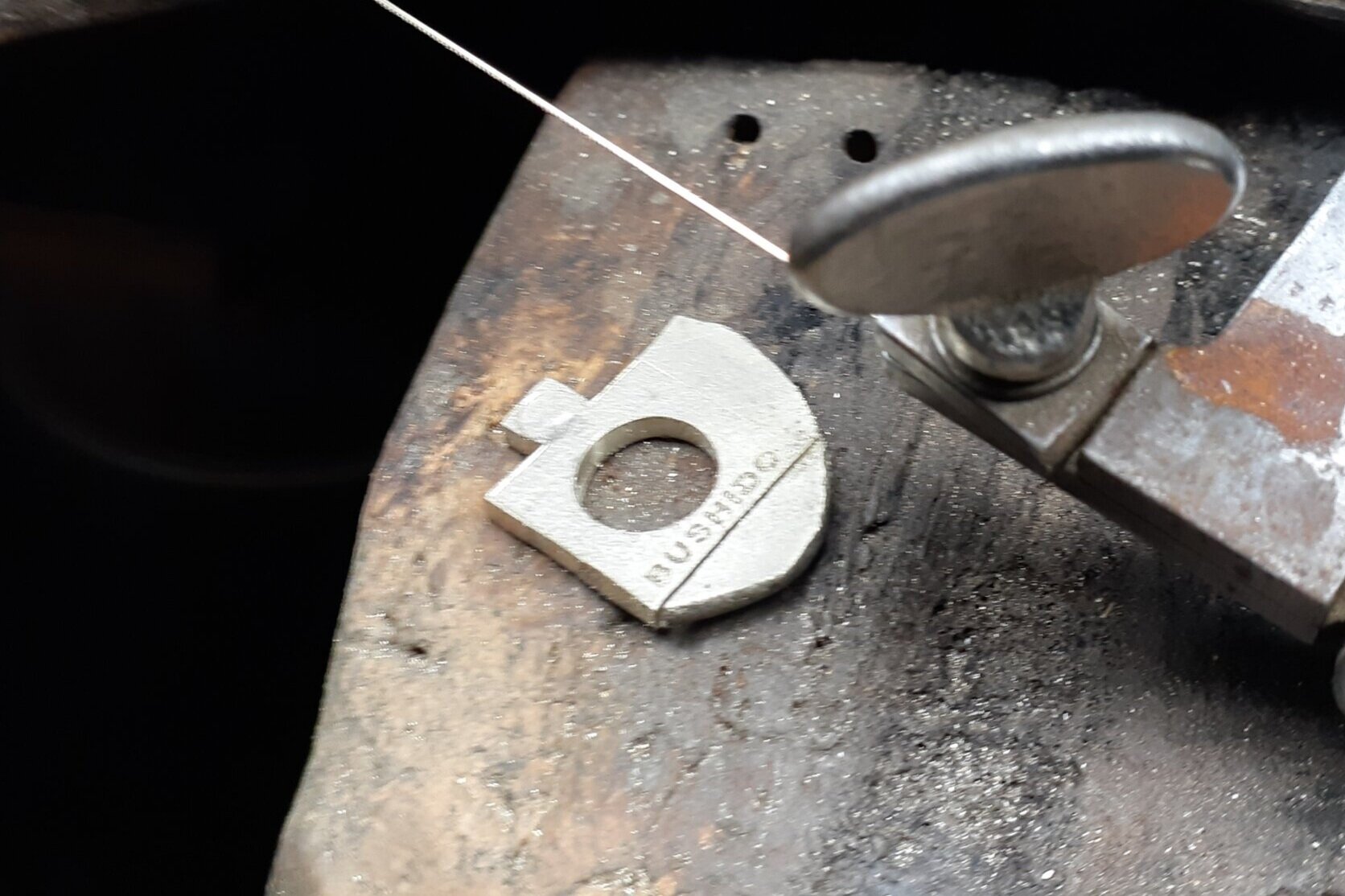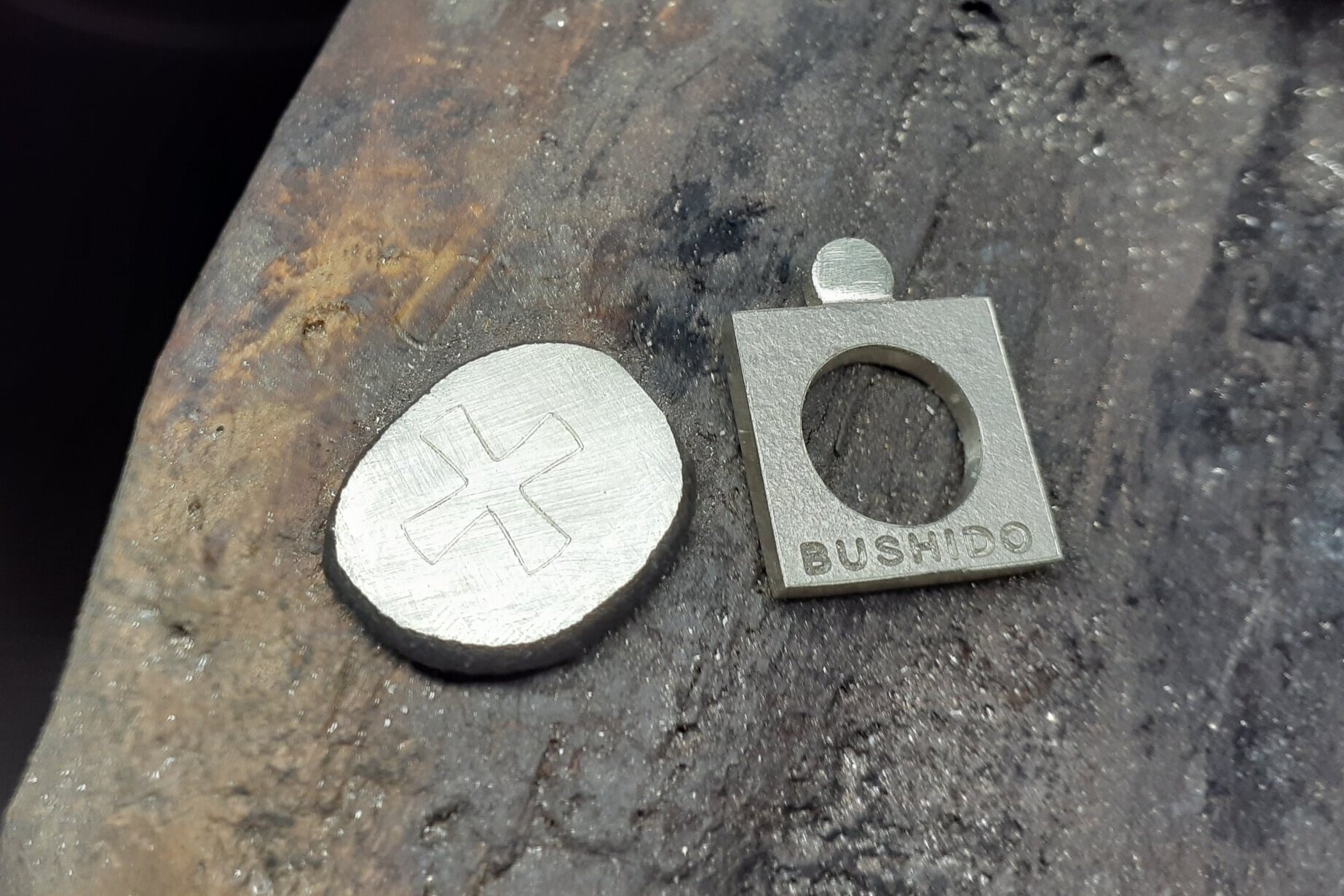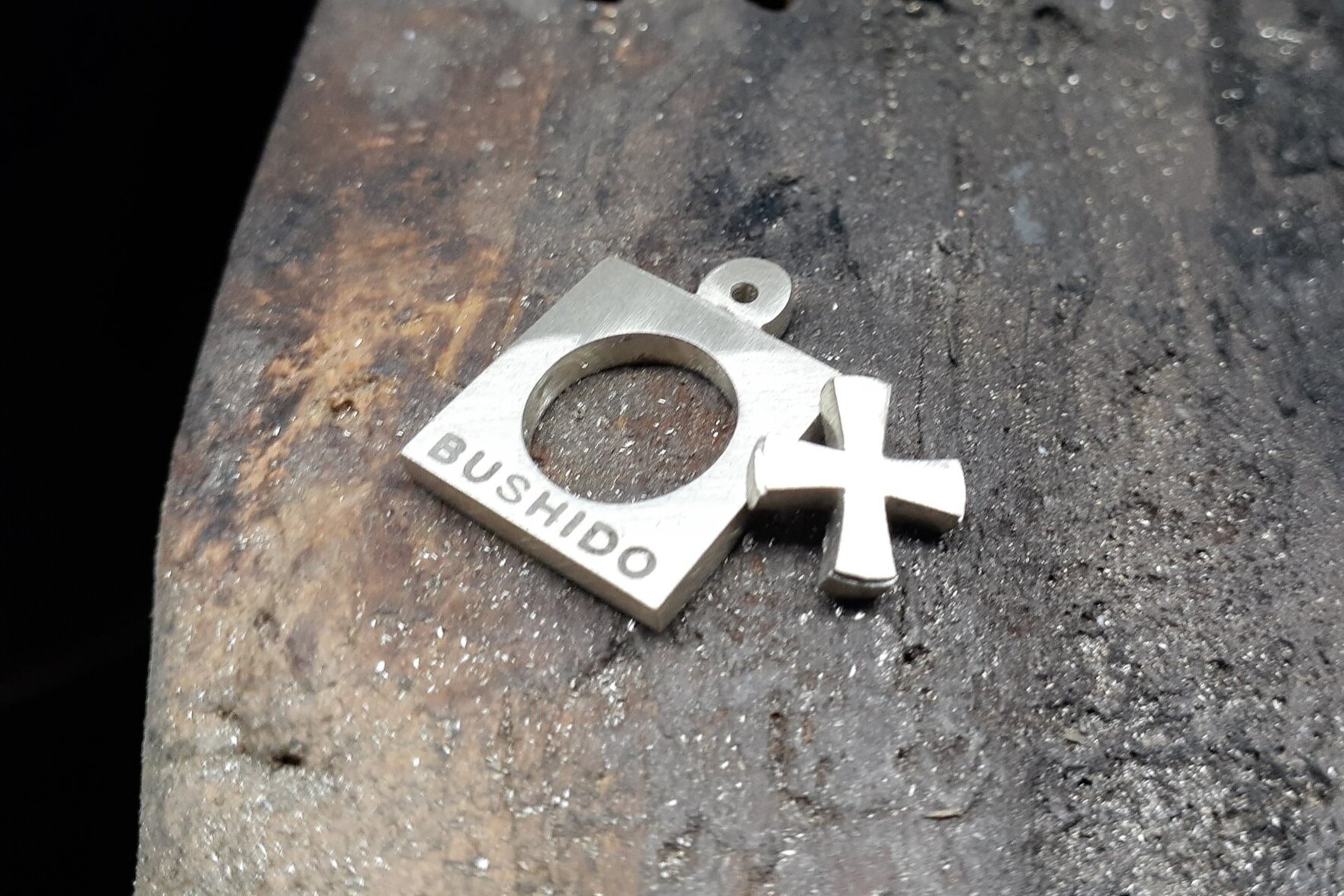Subtractive Manufacturing a Bushido Cross
24th May 2020
The outline of the pendant with the wording engraved.
Subtractive manufacturing is where an object is formed by removing material from a larger starting mass.
You can see in the above photo the starting form for this Bushido Cross is a plate of metal large enough to trace the pendant outline onto. To save having to align the engraving later it is done at this initial stage.
Often I find customer are very surprised at how much metal is need to make a piece with a far less finished weight. This is especially when customers want to recycle old jewellery.
Piece 1 - the frame
More of the excess metal is cut away.
The centre is cut out and then the outside edges are removed before being filed back to the marked lines. This is the largest portion of the metal that is subtracted during the making.
Piece 2 - the cross
The centre cross is traced out on another piece of metal.
Making the pendant in three pieces allows us to form nicely defined edges on the cross and to also pre-polish the internal side surfaces. Most of the Bushido Crosses that you see today are made using a different manufacturing process that does not allow this and results in a lower quality finish. More on that at the end.
The two pieces ready to be joined.
With the first two pieces now formed the side edges are polished prior to joining them together. The centre cross is made slightly thicker than the frame to allow for it to be filed back to one flat surface.
Joining pieces 1 and 2
Joined and ready for polishing.
Once the two pieces are joined the cross is filed and then emeried flat. It will be polished prior to the third and final piece, the bail, being added to the pendant.
Piece 3 - the bail
Photo of the chin next to a ruler.
This pendant is being made for a South Queensland customer who I have never met. To ensure that the pendant will fit and suit the chain it is intended to be worn on, I asked the customer to take a photo of the chain next to a ruler and email it to me.
Nothing would be more frustrating than the pendant arriving and the chain being unable to pass through the bail.
A mockup of the pendant edited into the photo of the chain to scale.
The ruler in the original photo allows me to scale the pendant into it and determine a size for the bail that will both allow it to take and suit this quite wide figaro chain.
Slightly wider bail on the left.
The size of the chain made it necessary for the bail to be a bit longer than normal. This extra length I felt made the bail look a bit too narrow. It was decided to widen it slightly as shown on the left above.
The finished Bushido Cross.
With all that done the pedant was now finished. This Bushido Cross was made in 9ct white gold and the finished weight was 5.5 grams.
The subtracted metal
The weight of the subtracted metal.
The whole point of this article was to show you how much extra metal can be required for subtractive manufacturing.
In the case of this pendant the subtracted metal weighed 1.5 times the finished weight. To make this 5.5 gram pendant we started with 13.9 grams of metal.
Could I have made the pendant with a bit less metal? Probably but the manufacturing process would have been much longer and I might have run the risk of not meeting the target measurements for the pendant due to lack of metal.
There is an easier way to make a Bushido Cross
In another post I will explain another method that can be used to make one of these crosses. Most crosses are made today using that method.
It also reveals why the Bushido Cross many wear today has shrunk in size compared to the ones all those years ago Bob Jones originally awarded to some of his Zen Do Kai students.
Crosses made in this manner are usually poorer in finish when compared to ones made using subtractive manufacturing. Some really poor :(
Update 14/09/2022:
Some Bushido Crosses I have made from a mould in Sterling Silver.
After so many requests and seeing the poor quality available elsewhere, I have started making these pendants from moulds in Sterling silver. This offers an affordable option for those that cannot afford or are not entitled to wear a handmade gold one.
My moulded and cast Sterling Silver Bushido Cross is not as well finished as the handmade ones but they far better than most I see for sale online.
Website Shop: Sterling Silver Bushido Cross
If they are out of stock in the store email me. I often put them aside for people and they never follow through, I then forget to put them back into stock.










